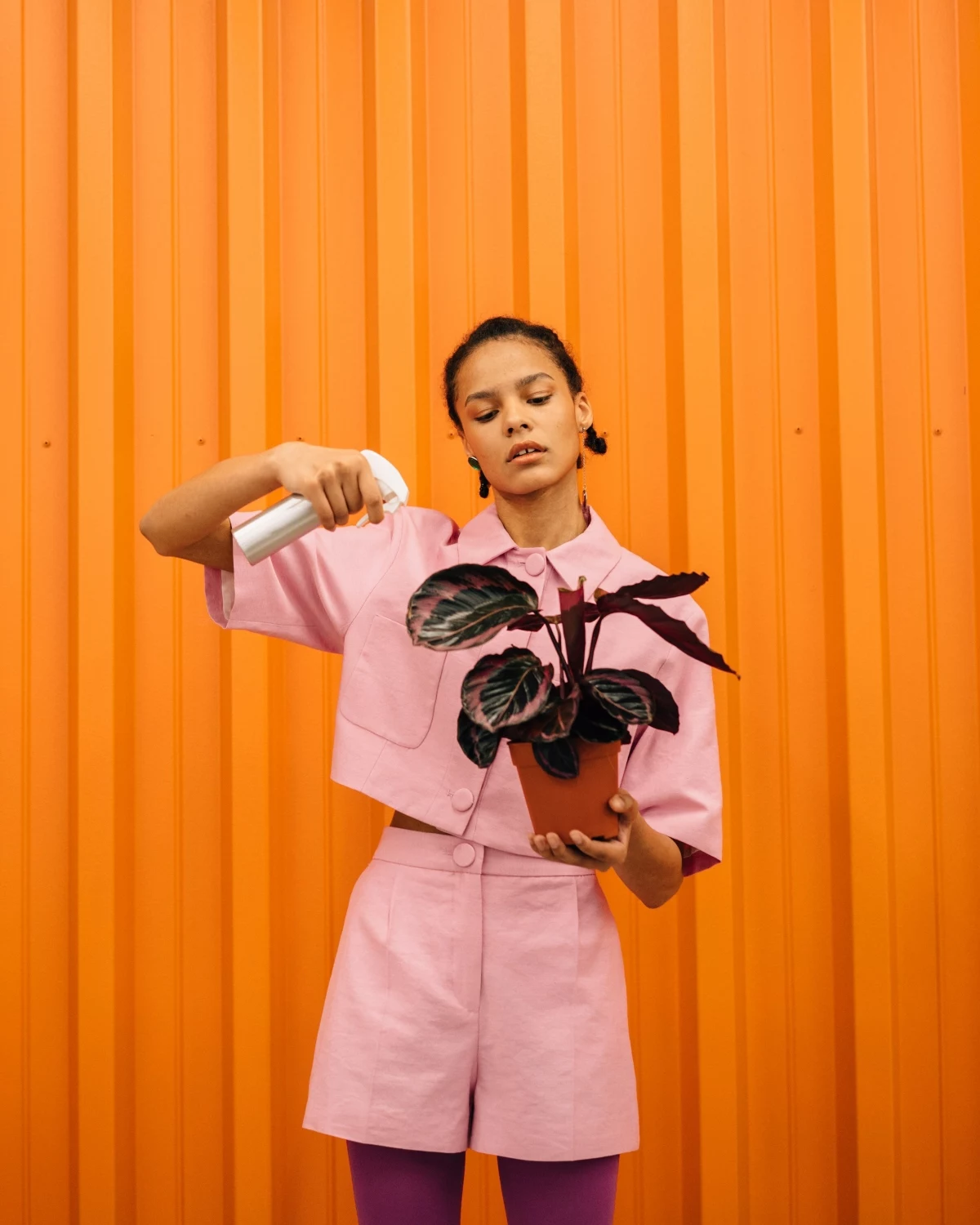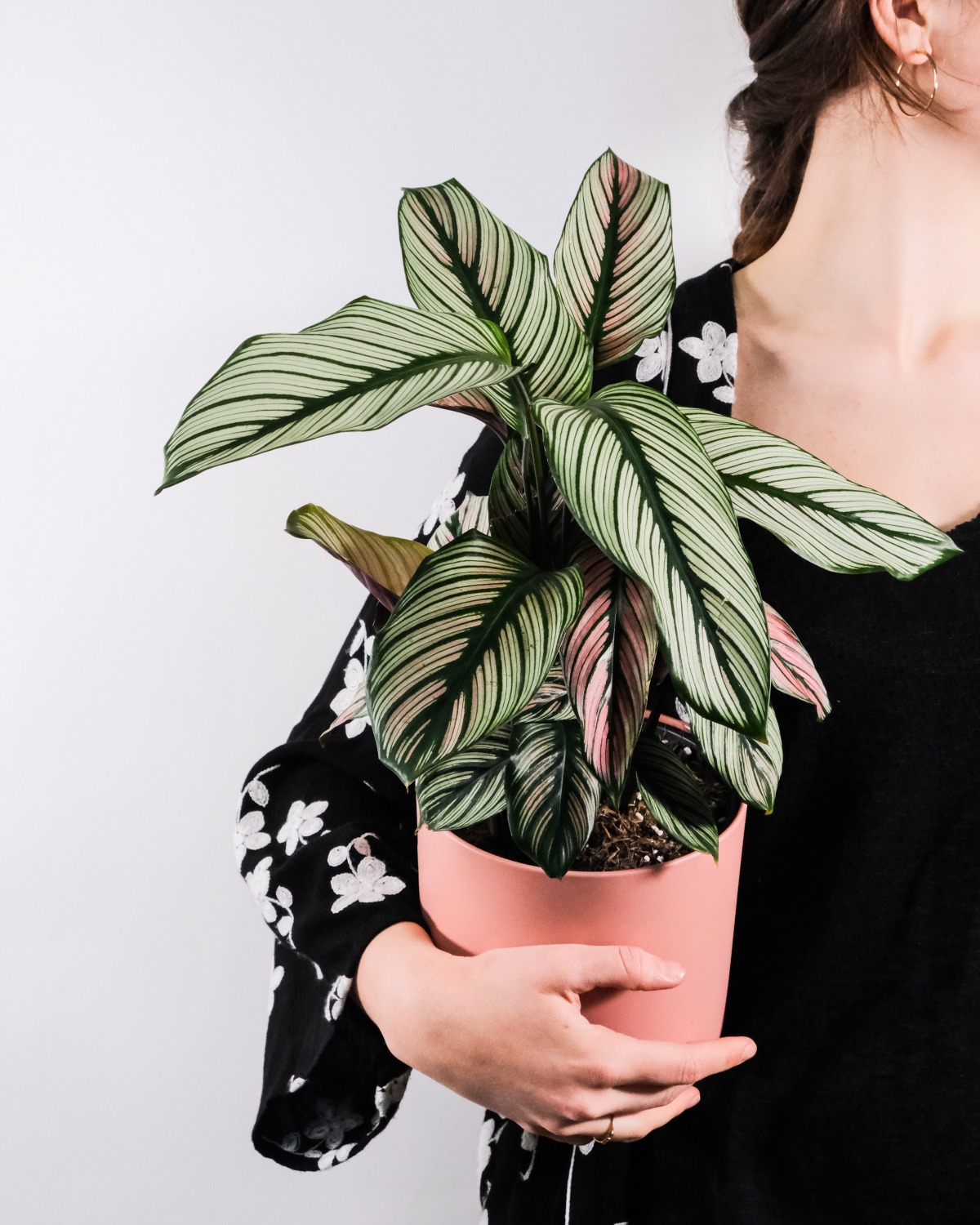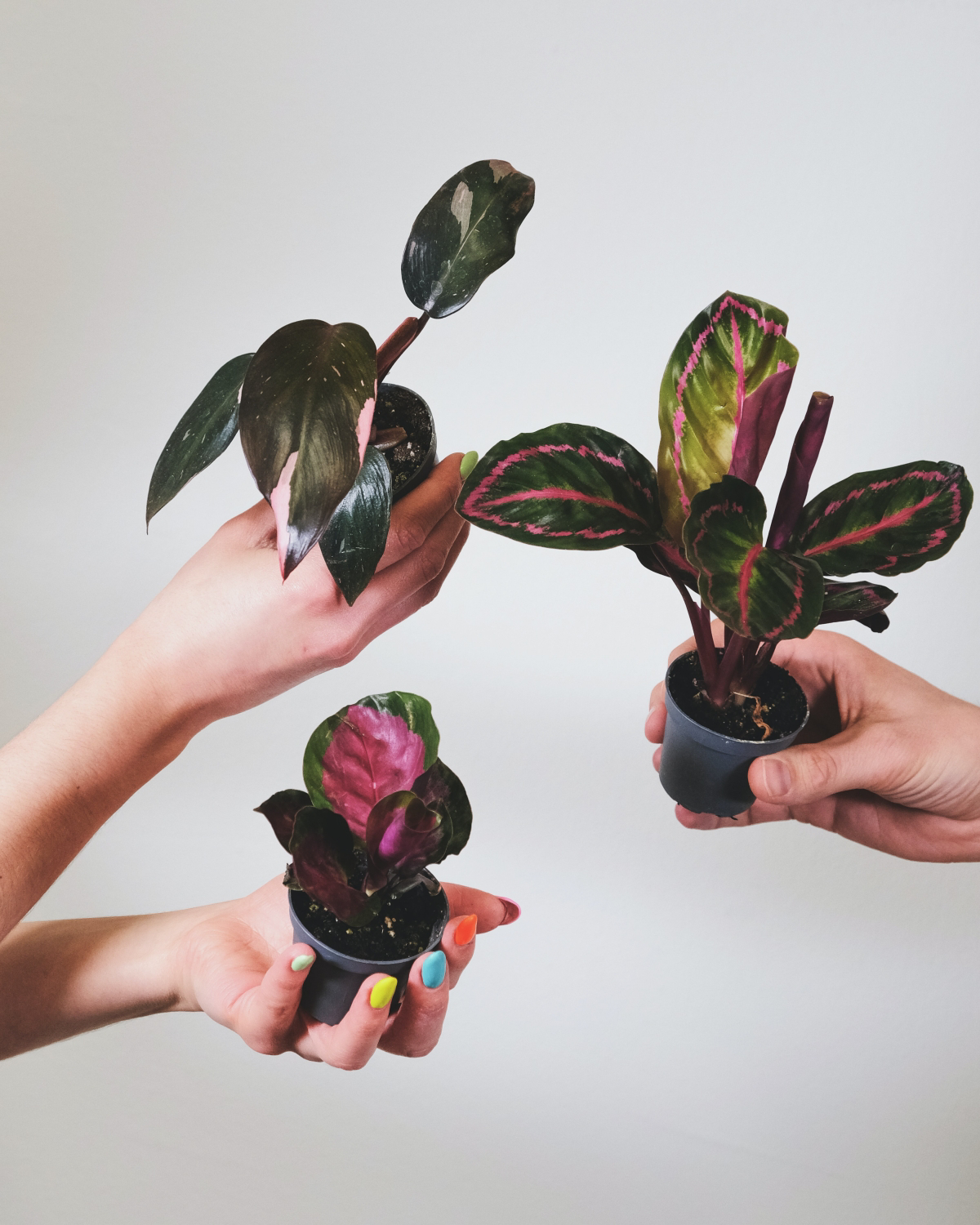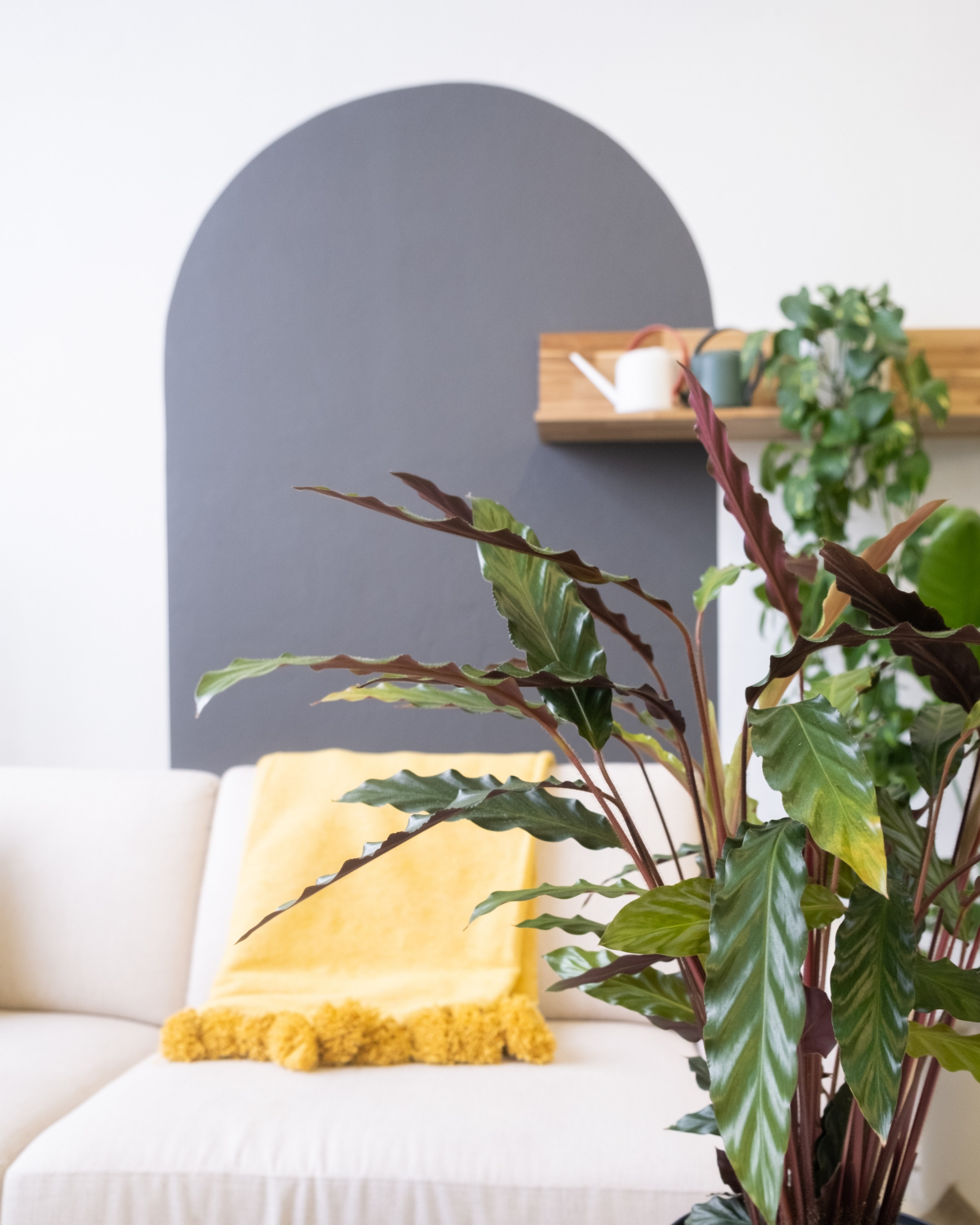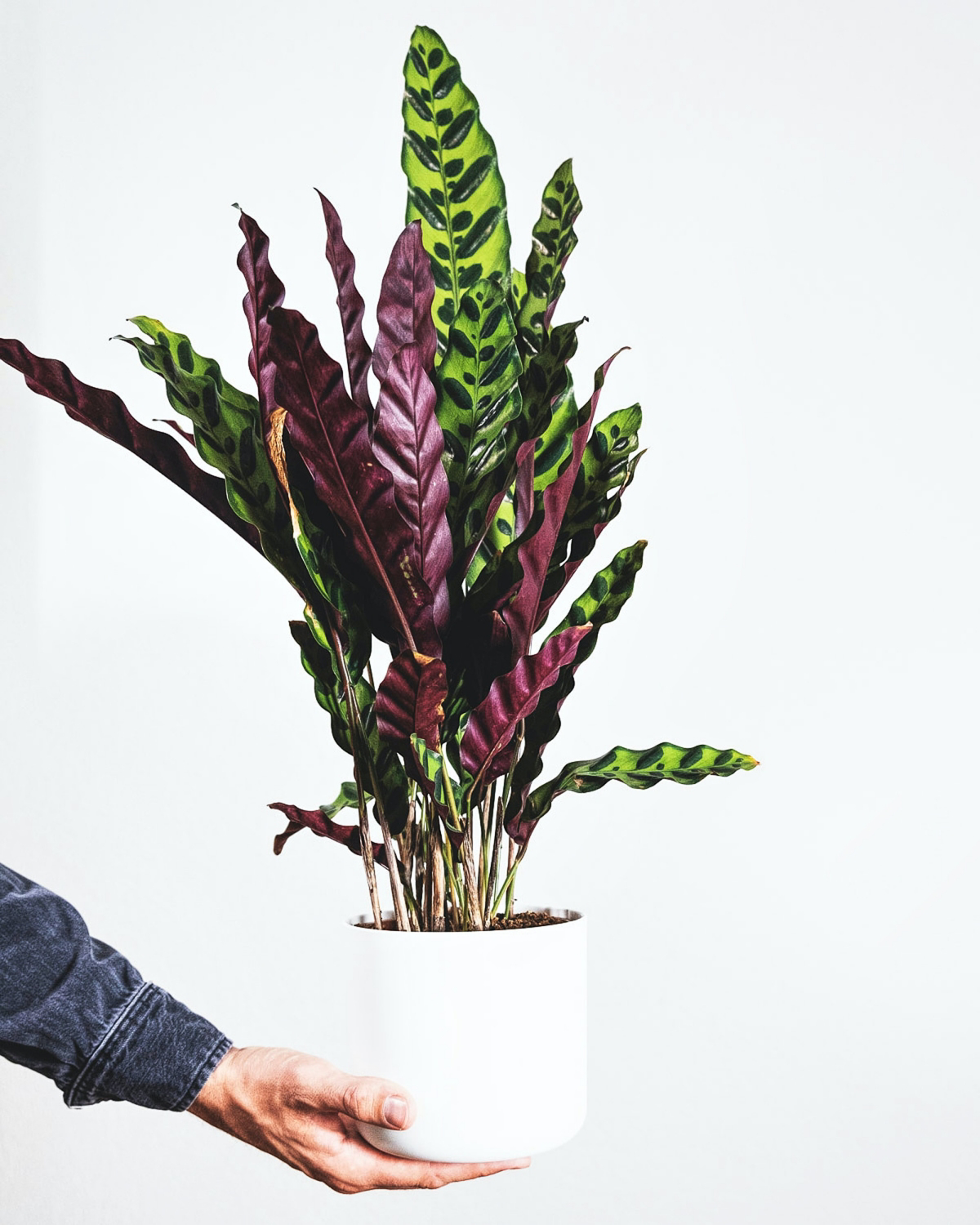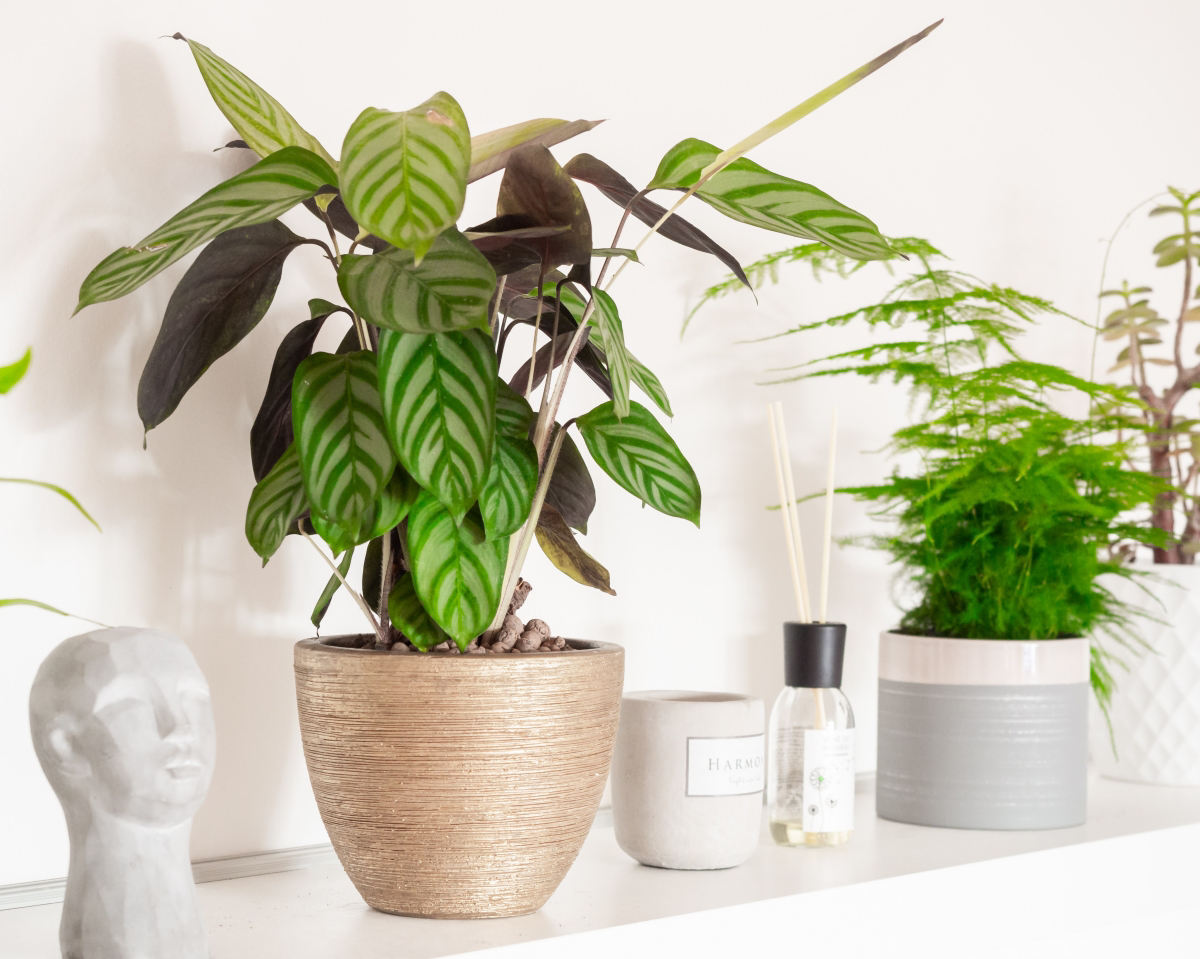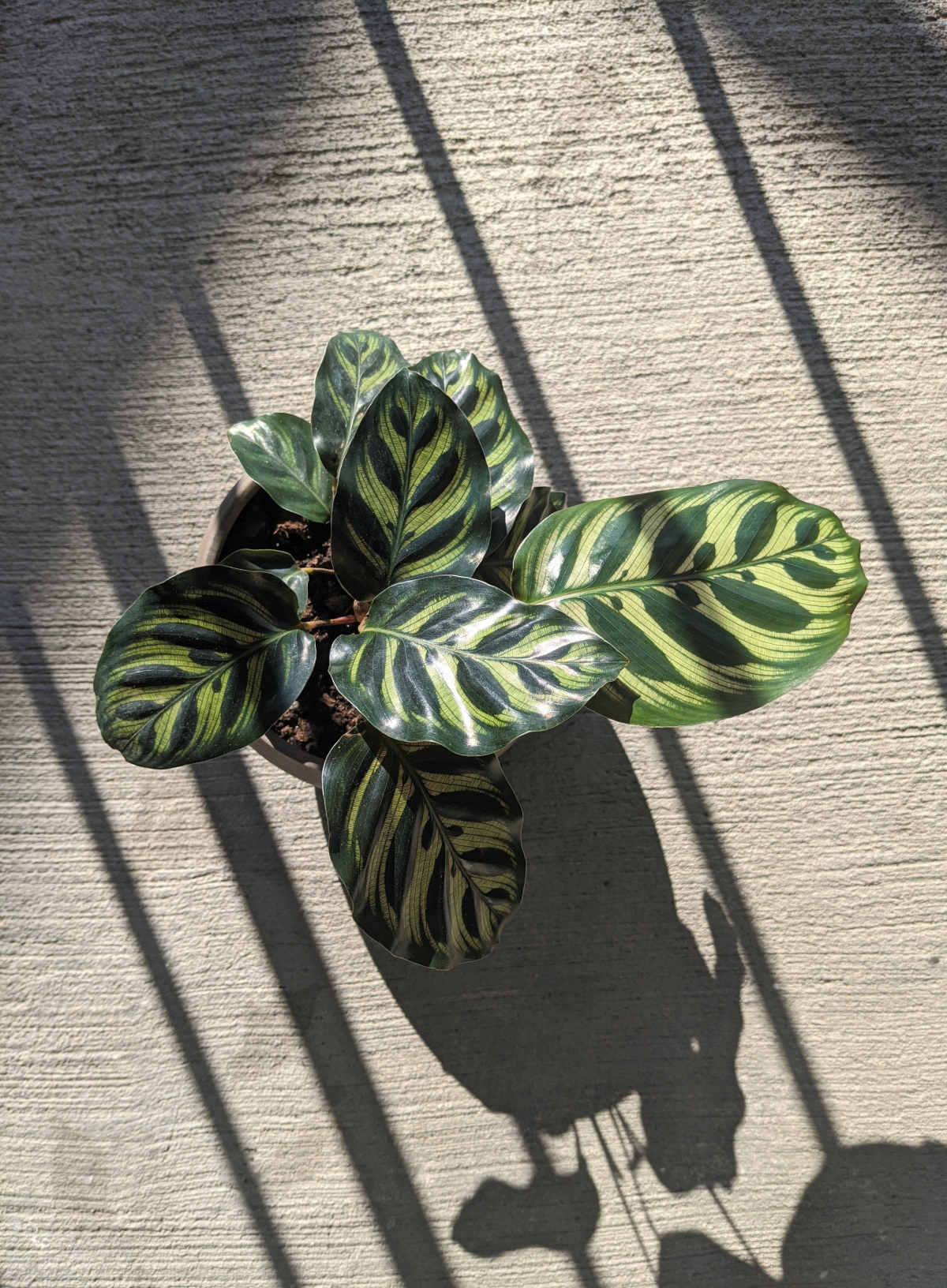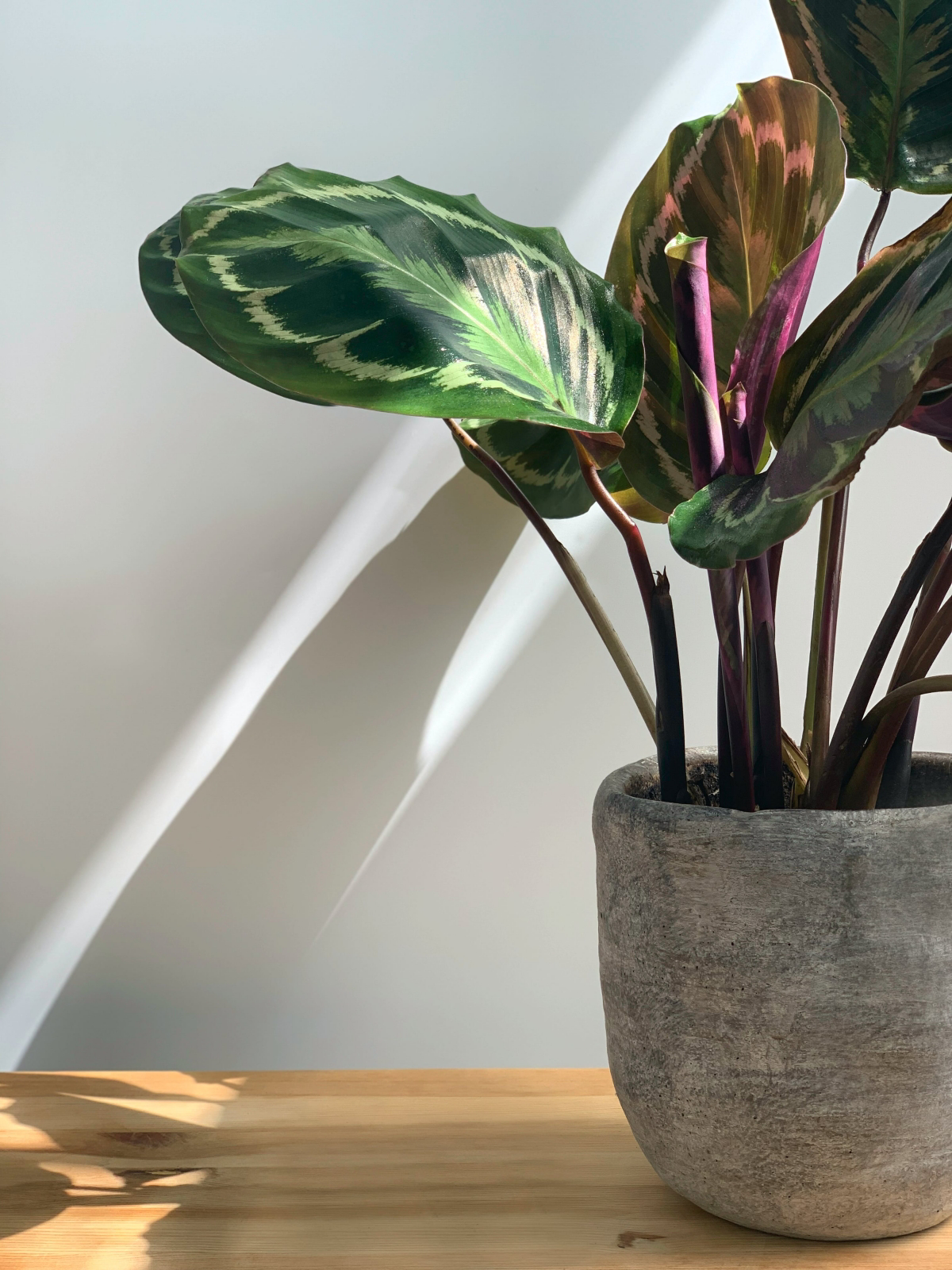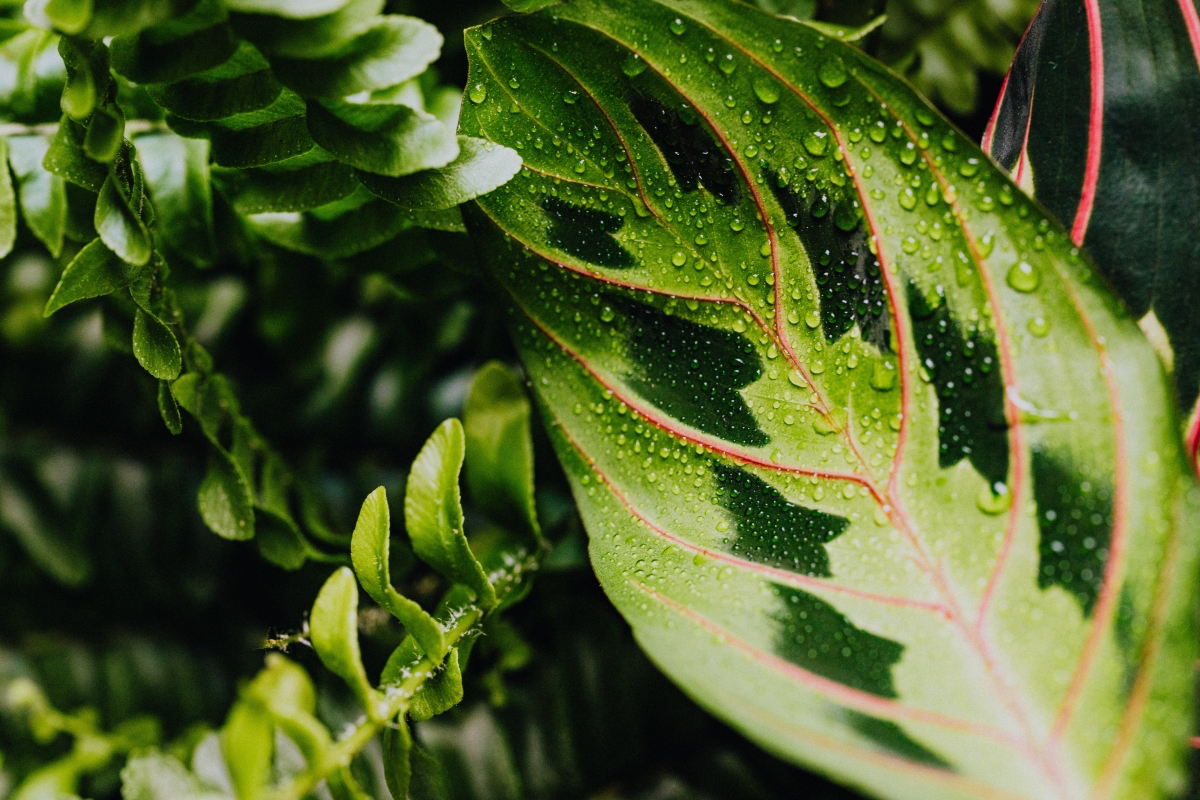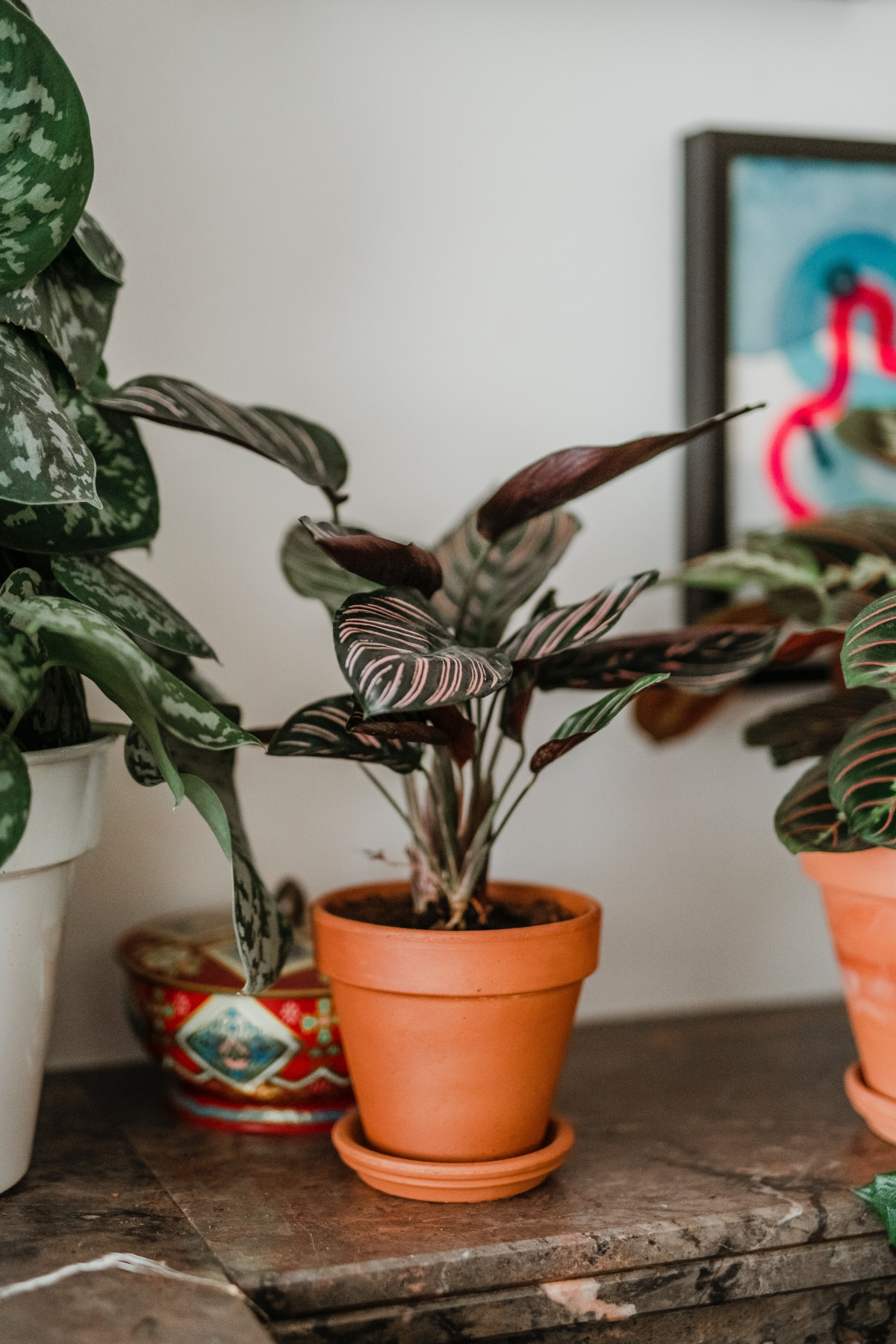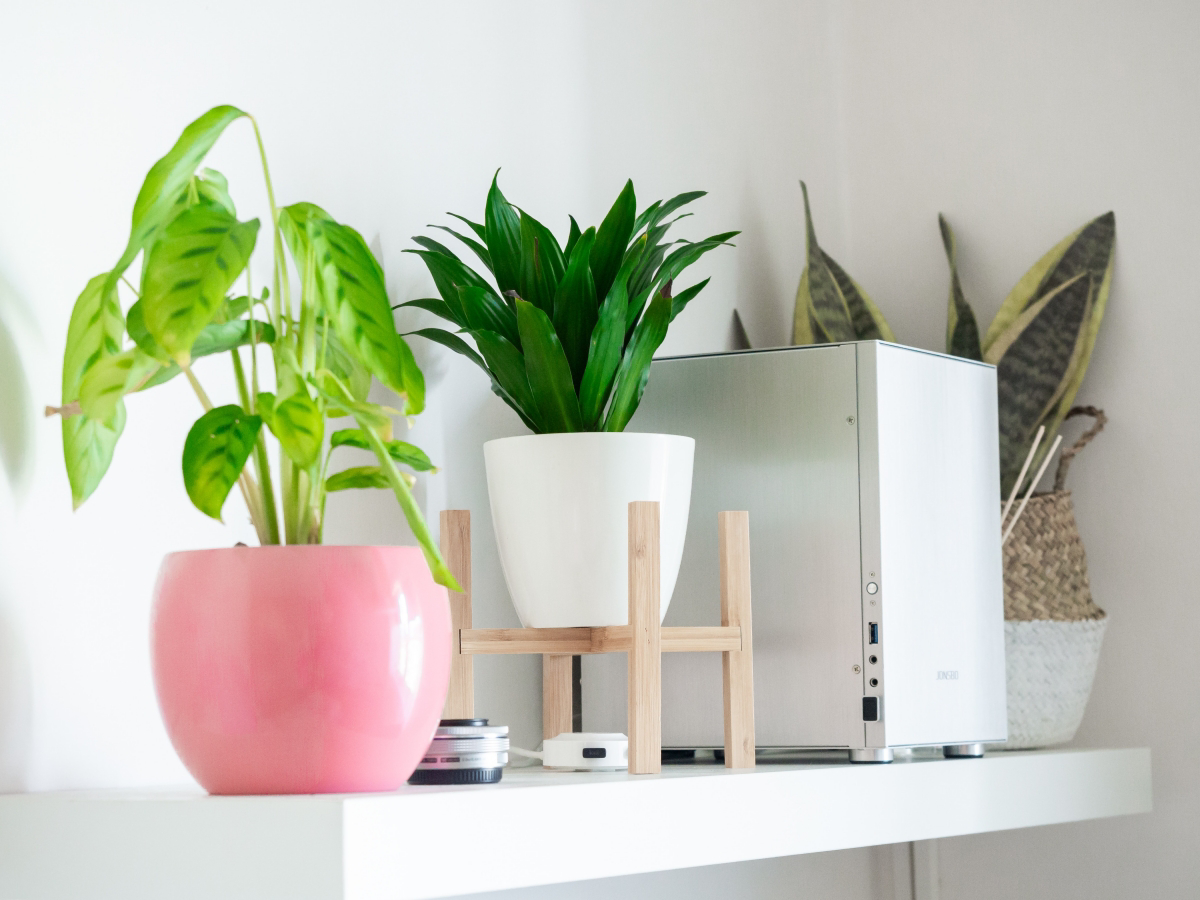Calathea Care 101: Your Guide to Nurturing Your Calathea Plant
Welcome to the wonderful world of Calathea care, where elegance meets ease, and greenery flourishes with a touch of charm. If you’re looking to elevate your indoor plant game and embark on a journey of botanical beauty, the Calathea is your new best friend. In this guide, we will delve deep into the fascinating realm of Calathea care, from understanding what a Calathea is to uncovering the secrets of nurturing this enchanting houseplant.
Time to learn how to properly take care of a Calathea plant
In this article
What is a Calathea?
Let’s begin with the basics. A Calathea is a genus of tropical plants known for their striking foliage and vibrant patterns. These plants are part of the Marantaceae family and are native to the lush rainforests of South America. What sets Calatheas apart is their unique ability to move their leaves in response to light changes, earning them the nickname “prayer plants.” With a wide variety of species and cultivars to choose from, each Calathea boasts its own captivating leaf design, making it a true work of art in the world of indoor greenery.
A Calathea is a genus of tropical plants known for their striking foliage and patterns
Calathea Variations
Certainly, there is a captivating variety of Calatheas to choose from, each with its unique foliage patterns and colors. Here are some popular types of Calatheas that you can consider adding to your indoor garden:
- Calathea ornata (Calathea Pinstripe): Known for its striking pink stripes on dark green leaves, the Calathea ornata is a showstopper.
- Calathea lancifolia (Rattlesnake Plant): The Calathea lancifolia features elongated, lance-shaped leaves with intricate dark green patterns and purplish undersides.
- Calathea zebrina (Zebra Plant): With its distinctive, zebra-like stripes on bright green leaves, the Calathea zebrina is a visual delight.
- Calathea medallion: The Calathea medallion showcases large, round leaves with intricate patterns resembling a medallion or stained glass. Its vibrant green foliage is accentuated by shades of deep green and purple.
- Calathea makoyana (Peacock Plant): The Calathea makoyana earns its name from the beautiful peacock feather-like patterns on its leaves. Its light green foliage is adorned with dark green ovals and stripes, creating an enchanting display of colors.
- Calathea orbifolia: If you’re drawn to lush, broad leaves with silver-green stripes, the Calathea orbifolia is an excellent choice. Its round, oversized leaves make it a standout in any collection, and its foliage has a velvety texture.
- Calathea roseopicta (Rose-Painted Calathea): As the name suggests, the Calathea roseopicta features beautiful, rose-like patterns on its leaves. This variety comes in several cultivars, each with its unique coloration and markings.
- Calathea triostar (Stromanthe Triostar): While technically not a Calathea, the Stromanthe triostar is often grouped with Calatheas due to its striking appearance. Its creamy-white, pink, and green variegated leaves create a visually stunning display.
- Calathea warscewiczii: Known for its velvety, dark green leaves with silver streaks, the Calathea warscewiczii exudes an air of elegance.
- Calathea white fusion: This captivating Calathea variety features a fusion of white, green, and pink hues on its leaves.
As you can see, there is a captivating variety of Calatheas to choose from
Who Should Get a Calathea?
Now, let’s delve deeper into the question of who should consider welcoming a Calathea into their homes. This remarkable plant isn’t just a beautiful addition to your interior decor; it’s also a delightful companion that can bring a touch of nature’s elegance to your life.
- Plant Lovers and Aesthetes: If you’re someone who’s genuinely passionate about plants and has a keen eye for aesthetics, a Calathea is like a living masterpiece. Its intricate leaf patterns, vibrant colors, and mesmerizing movements set it apart from your average houseplant. Each variety of Calathea boasts a unique and captivating design, making it a must-have for plant aficionados and art enthusiasts alike.
- Nature Enthusiasts, Indoors: Calatheas are an excellent choice for those who appreciate the beauty of nature but live in urban settings, apartments, or regions with challenging weather conditions. These adaptable plants thrive in indoor environments, allowing you to create a mini oasis of greenery and tranquility right in your home.
- Apartment Dwellers and Homeowners: Whether you reside in a cozy city apartment or a spacious suburban home, Calatheas are versatile and adaptable companions. They don’t require vast expanses of garden space or sprawling outdoor gardens to flourish. Compact and stylish, these plants can easily find a cozy corner or a prominent spot on your windowsill.
- Tranquility Seekers: Beyond their visual appeal, Calatheas offer something truly special – a sense of tranquility and inner peace. Watching their leaves move gracefully in response to the changing light creates a calming, meditative experience. Their presence can help you disconnect from the hustle and bustle of daily life and find solace in the natural world.
- Plant Enthusiasts at Any Level: Whether you’re a seasoned plant collector with a house full of green companions or a newcomer eager to embrace the world of indoor gardening, a Calathea is an ideal choice. Its care requirements, while specific, are manageable and provide an excellent opportunity to learn and grow as a plant parent.
Luckily, Calatheas are versatile and adaptable companions
What Are the Benefits of Owning a Calathea?
Owning a Calathea goes beyond aesthetics; it’s a delightful experience for your senses and your well-being. Here are some of the benefits of inviting a Calathea into your home:
- Air Purification: Calatheas are excellent air purifiers, cleansing your indoor environment of toxins and creating a healthier living space.
- Stress Reduction: The calming presence of Calathea’s lush foliage can reduce stress and promote relaxation.
- Natural Humidity: These plants release moisture into the air, increasing humidity levels in your home, which is particularly beneficial during dry seasons.
- Visual Delight: The intricate patterns and movements of Calathea leaves provide a visually captivating and ever-changing display.
These houseplants release moisture into the air, increasing humidity levels in your home
Who Should Avoid this Plant?
While Calatheas are a delight for many, there are a few situations in which it’s best to reconsider bringing one home:
- Pets with a Green Thumb: If you have curious pets that enjoy nibbling on plants, Calatheas may not be the best choice, as some species are toxic to pets if ingested.
- Low-Light Environments: Calatheas thrive in bright, indirect light, so if your space lacks natural light, you may want to opt for a more shade-tolerant plant.
- Frequent Travelers: Calatheas require consistent care, so if you’re often away from home, it might be a challenge to maintain their well-being.
Be careful because some species are toxic to pets if ingested
Is a Calathea a Hard Plant to Take Care Of?
Now, the big question: Is a Calathea a high-maintenance diva in the world of houseplants? The answer is a balanced one. While Calatheas have specific needs, they are not overly difficult to care for. With a little attention and love, you can successfully nurture a thriving Calathea.
These plants are not overly difficult to care for
How to Take Care of a Calathea
Watering
Watering your Calathea is a crucial aspect of its care, as these plants thrive on consistent moisture but are quite finicky about their watering routine. To ensure your Calathea remains healthy and happy, here’s a detailed breakdown of how to master the art of watering:
- Watering Frequency: Calatheas are not fans of extremes when it comes to soil moisture. You’ll want to strike a balance between keeping the soil consistently moist while avoiding waterlogged conditions. The general rule of thumb is to water your Calathea when the top inch of the soil feels dry to the touch. This typically translates to watering every 1-2 weeks, depending on factors like humidity levels, pot size, and environmental conditions. Be sure to adjust the frequency accordingly to prevent both underwatering and overwatering.
- Water Quality: Just like humans, Calatheas appreciate good water quality. To avoid shocking your plant, opt for filtered or room-temperature water. Tap water that contains high levels of chlorine or minerals can negatively affect your Calathea’s health. If you don’t have access to filtered water, you can fill a container and let it sit for 24 hours to allow the chlorine to dissipate before using it for watering.
- Drainage: Proper drainage is essential to prevent one of the biggest enemies of houseplants – root rot. Ensure that your Calathea’s pot has adequate drainage holes at the bottom. This allows excess water to escape, preventing it from saturating the roots. Always empty the saucer beneath the pot after watering to avoid your Calathea sitting in standing water. Remember, good drainage is the key to a happy, thriving plant.
Calatheas are not fans of extremes when it comes to soil moisture
Light
Understanding your Calathea’s lighting needs is crucial to ensure its well-being. These plants originate from the rainforest floor, where they receive filtered sunlight through the dense canopy. To replicate their native habitat and keep your Calathea thriving, follow these guidelines for providing the perfect light conditions:
- Indirect Light: Calatheas thrive in bright, indirect light. Place your Calathea near a window with sheer curtains or in a well-lit room without direct sunlight. The goal is to mimic the gentle, dappled sunlight they would receive under the canopy of the rainforest. This indirect light helps maintain their vibrant leaf patterns and prevents leaf burn.
- Avoid Direct Sun: One thing that Calatheas strongly dislike is harsh, direct sunlight. Direct sun exposure can scorch their leaves and lead to unsightly damage. If you notice your Calathea’s leaves turning brown or developing sunburn-like spots, it’s a sign that it’s receiving too much sunlight. Shield your plant from direct rays, and it will reward you with healthy, lush foliage.
One thing that Calatheas strongly dislike is harsh, direct sunlight
Temperature
Calatheas are sensitive to temperature changes, so maintaining the right temperature is essential for their well-being. Here’s a closer look at how to keep your Calathea comfortable:
- Ideal Range: Calatheas thrive in rooms with temperatures between 65°F to 80°F (18°C to 27°C). This temperature range mimics the warm and humid conditions of their native rainforest habitat. Avoid exposing your Calathea to extreme heat or cold, as it can stress the plant and lead to leaf curling or discoloration.
- Avoid Drafts: Calatheas are particularly sensitive to drafts, which can disrupt their environment and cause stress. Keep your plant away from strong drafts caused by open windows, air conditioning vents, or heaters. Position your Calathea in a stable, draft-free location within your home to ensure it remains comfortable and healthy.
With these temperature considerations in mind, you’ll create a cozy, rainforest-like atmosphere that your Calathea will thrive in, displaying its intricate leaf patterns to their full potential.
Calatheas are particularly sensitive to drafts, which can cause stress
Fertilization
Fertilizing your Calathea is a key part of its care routine, providing essential nutrients that promote healthy growth and vibrant foliage. Here’s what you need to know:
- Frequency: During the growing season, which typically spans from spring through summer, it’s essential to feed your Calathea every 4-6 weeks. This periodic fertilization ensures your plant receives the nutrients it needs to thrive. However, during the dormant season (fall and winter), reduce or eliminate fertilization, as your Calathea’s growth slows down.
- Dilution: When fertilizing, follow the instructions on the package of your water-soluble fertilizer. Proper dilution is crucial to avoid over-fertilization, which can harm your Calathea. It’s generally recommended to use a balanced, all-purpose fertilizer diluted to half strength during the growing season.
By providing the right nutrients in the right amounts, you’ll support your Calathea’s growth and ensure it maintains its stunning appearance throughout the year.
Fertilization provides essential nutrients that promote healthy growth and vibrant foliage
Placement
Choosing the perfect spot for your Calathea within your home is crucial for its well-being. These plants are particularly sensitive to their surroundings, so here’s how to find the ideal location:
- Bathroom Bliss: Bathrooms with higher humidity levels can be an excellent spot for your Calathea. The natural moisture in the air created by showers and baths can mimic their rainforest environment. Just ensure it receives enough indirect light, as bathrooms can sometimes be dimly lit.
- Avoid Air Conditioning and Heating Vents: Calatheas dislike drastic temperature fluctuations and drafts caused by air conditioning or heating vents. Placing your plant near these vents can lead to stress and leaf problems. Opt for a location away from these sources of air circulation to keep your Calathea comfortable.
With the right placement, your Calathea will thrive and become a delightful addition to your home’s decor.
Calatheas dislike drastic temperature fluctuations and drafts
Humidity
Calatheas thrive in higher humidity levels, and maintaining the right humidity is essential for their health and appearance. Here are some practical tips to ensure your Calathea enjoys the ideal humidity:
- Humidity Tray: Place a tray filled with water and pebbles near your Calathea. As the water evaporates, it increases the humidity in the immediate vicinity of the plant. This simple trick can help create the perfect microclimate for your Calathea.
- Misting: Lightly misting your Calathea’s leaves with room-temperature water can provide additional moisture and boost humidity. However, avoid soaking the leaves excessively, as this can lead to fungal issues.
- Grouping Plants: Placing your Calathea near other indoor plants can naturally increase humidity levels, as plants release moisture through transpiration. Just ensure proper spacing to prevent overcrowding.
By maintaining higher humidity levels, you’ll replicate the rainforest environment that your Calathea loves, resulting in lush and healthy foliage.
Lightly misting your Calathea’s leaves can provide additional moisture and boost humidity
Soil
Choosing the right soil mix for your Calathea is crucial for its overall health and well-being. Here’s a closer look at the soil requirements:
- Well-Draining: Calatheas prefer a well-draining potting mix that allows excess water to escape quickly. This prevents waterlogged soil, which can lead to root rot.
- Peat-Based Mix: A potting mix containing peat moss is ideal for Calatheas. Peat moss helps retain moisture while maintaining the slightly acidic pH that Calatheas prefer. You can also add perlite or orchid bark to improve aeration and drainage.
- Repotting: Repot your Calathea every 2-3 years to refresh the soil and provide more room for growth. Choose a slightly larger pot each time to accommodate its expanding root system.
By selecting the right soil mix and repotting as needed, you’ll provide your Calathea with the perfect growing medium for thriving and flourishing.
Calatheas prefer a well-draining potting mix that allows excess water to escape quickly
Propagation
If you’re looking to expand your Calathea collection or share the joy of these beautiful plants with friends and family, propagation through division is a viable option. Here’s how to go about it:
- Springtime Propagation: The best time to divide your Calathea is during the growing season, which typically occurs in spring or early summer. This is when your plant is most actively growing and has the best chance of successful division.
- Healthy Divisions: When dividing your Calathea, ensure that each division has healthy roots and at least one leaf. Gently remove the plant from its pot and separate it into smaller sections, making sure each section has its share of roots and foliage.
- Potting the Divisions: Plant each division in its own pot with fresh, well-draining potting mix. Water lightly after repotting, and place the newly divided plants in a location with bright, indirect light.
Propagation through division allows you to create new Calathea plants while rejuvenating the original plant, ensuring a healthy and vibrant collection.
Propagation allows you to create new Calathea plants while rejuvenating the original plant
Pests
While Calatheas are generally considered pest-resistant, occasional invaders may still appear. Here’s how to handle common pests:
- Spider Mites: Keep a close eye on your Calathea for tiny spider mites, which can sometimes infest indoor plants. If you notice fine webbing and tiny dots on the leaves, it’s a sign of spider mites. Treat them promptly with neem oil or insecticidal soap to prevent further infestation.
- Mealybugs: Mealybugs can be another nuisance for your Calathea. If you spot these white, cotton-like pests, remove them manually with a cotton swab dipped in alcohol. Regularly inspect your plant to catch any mealybugs early.
By staying vigilant and addressing pest issues promptly, you can keep your Calathea healthy and pest-free.
Regularly inspect your plant to catch any pests early
Conclusion
Congratulations! You’ve now unlocked the secrets to successful Calathea care and are well on your way to nurturing a thriving and captivating indoor plant. Remember, while Calatheas have their specific needs, they are not impossible to care for. With a little attention and love, you can enjoy the beauty and benefits of these charming houseplants. So, go ahead, bring home a Calathea, and watch as it transforms your space into a lush oasis of natural elegance. Happy gardening!
Now you know how to take care of this unique indoor plant!
